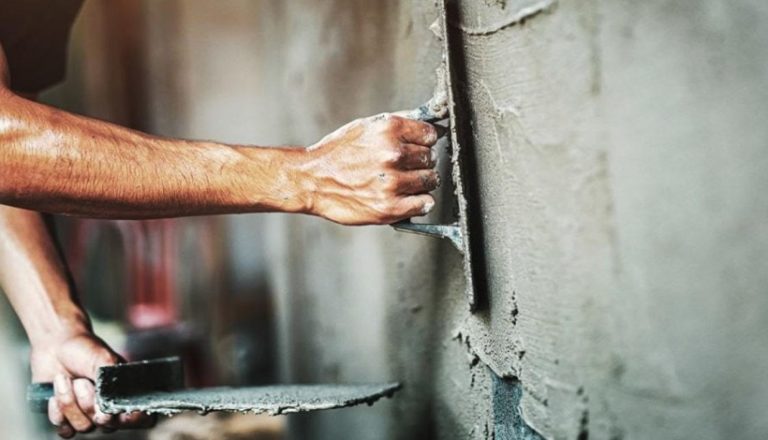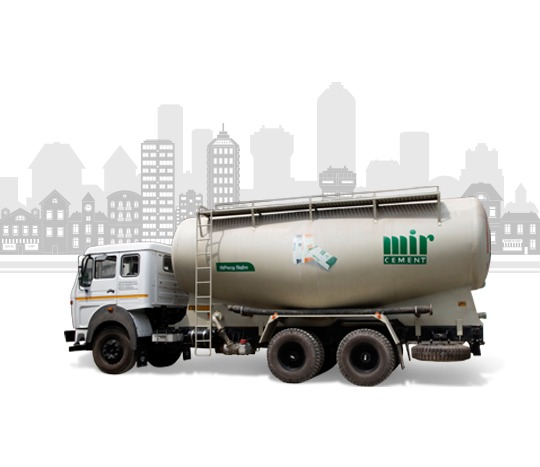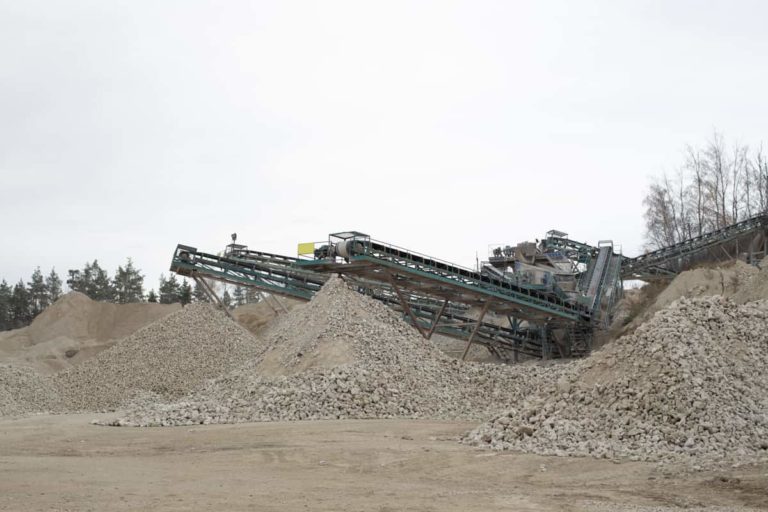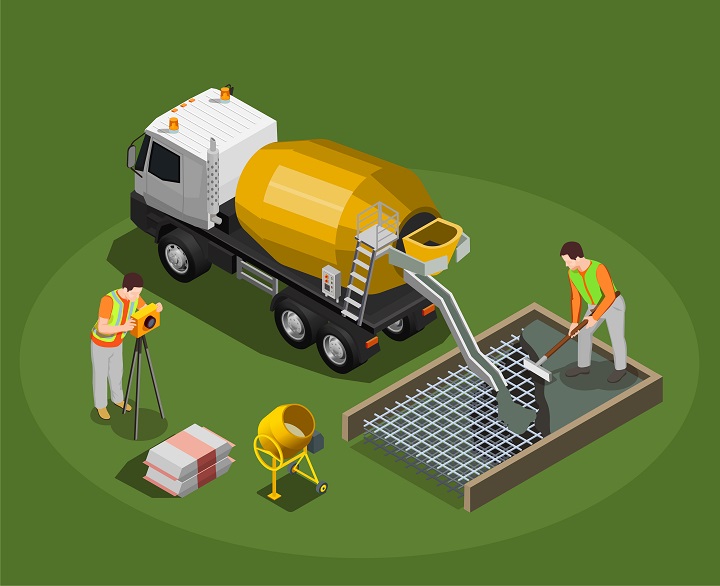The Manufacturing Process of Cement in Factory
Cement is an essential material in producing concrete and mortar. Concrete and mortar are basic building materials. So, cement plays a vital role in civil engineering works. The history of cement dates back to ancient Greece and Rome. Initially, lime and volcanic ash were mixed with water to form a hard mass that supported structural weight. Volcanic ash used to be mined near what is now the city of Pozzuoli, Italy. The name Pozzolana cement originated from this city.
Joseph Aspdin of Leeds, England, produced the modern version of “Portland Cement” in 1824. He named it “Portland” due to its resemblance to Portland stone. The remarkable property of cement quickly spread around the globe, and people started to rely on its strength to build structures. Currently, cement has become one of the most utilized products in the world. Its demand is rapidly increasing in developing nations. Demand for cement is also increasing in Bangladesh due to the ongoing construction of various megaprojects. The cement industry in Bangladesh is a promising one. The total volume of cement production amounted to an estimated 4.4 billion tons in 2021. For context, it was only 1.39 billion tons in 1995 according to Statista. The manufacturing process of cement consists of several complicated procedures. It starts from mining good quality raw materials from specific areas. Highly skilled individuals supervise the whole manufacturing process to ensure cement quality is up to international standards. In order to understand how cement is made, at first, we must know what it does and how the raw materials are sourced from the earth.
What is Cement?
Cement is a fine powder mainly made by heating limestone and clay minerals to extreme temperatures. The resulting material is referred to as clinker, which is then grounded with a pozzolan such as silica fume or fly ash into the powdered product commonly known as cement.
When cement is mixed with water, it forms a paste. The paste can take up any shape before its initial setting time. After the cement hardens, almost no particle can pass through it. This is because cement works extraordinarily well with binding other materials together due to its adhesive properties. Cement is the solid foundation material for nearly all modern structures like bridges, roads, dams, skyscrapers, and buildings. It is possible to make such structures because cement has high compressive strength. High compressive strength allows the material to retain its shape when a load is applied. Cement is mainly used in the production of concrete and mortar.
Cement is of many different types. These variations depend on cost, setting time, strength development, characteristics, and properties. So, it is essential to know which type of cement is required for specific construction work to get the best output. There are non-hydraulic cement, hydraulic cement, and Portland cement.
What is Cement Made of?
Contrary to popular belief, cement is not made only of limestone. Instead, it can be referred to as a high chemical-dependent product. Cement is produced in a closely controlled chemical combination of calcium, silicon, aluminum, iron, and other ingredients. Moreover, common materials used in cement production are limestone, shells, chalk, shale, clay, slate, blast furnace slag, silica sand, and iron ore.
Extraction and Processing of Raw Materials
Cement manufacturing demands naturally occurring rocks and minerals as raw materials. The most important raw materials are silicates, limestone, clay, and iron ore. Any impurities in these raw materials can be detrimental to the quality of the cement. So, these materials are reduced to very fine particles to remove the crushed rock’s impurities, carbon dioxide, and water content.
These raw materials are extracted by quarrying in the case of hard rocks such as limestones, slates, and some shales, with the help of blasting when required. Softer rocks like chalk and clay are extracted by digging directly by excavators. Some deposits are mined by underground methods.
The excavated materials are transported to the crushing plant by large trucks, railway freights, conveyor belts, and ropeways. If limestones are not high in lime content, some beneficiation processes can be applied. Froth flotation can remove surplus silica or alumina to improve the limestone. However, it is a very costly process and is conducted only when it is inescapable.
How is Cement Made?
The cement manufacturing process is a sequence of complicated steps that occur in cement manufacturing plants, also known as cement mills. There are four main steps in the manufacturing process of Portland cement. These steps include
1) Crushing and Grinding the Raw Materials
2) Blending the Materials in Correct Proportions
3) Burning the Prepared Mix in a Kiln
4) Grinding the Burned Product
The Burned product is known as clinker and is mixed with some five percent of gypsum to control the setting time of cement. The manufacturing process can be further divided into three distinct ways: 1) Wet, 2) Dry, and 3) semi-dry. The processes are different depending on the mode of feeding to the kiln.
Source: Civil Today
Crushing and Grinding
All materials except soft ones are crushed in this step, often in separate stages. After crushing the rock materials, they are placed in a rotating cylindrical ball or tube mills containing a charge of steel grinding balls. The grinding of materials is completed in this step. Depending on the manufacturer’s process, the grinding is done wet, dry, or semi-dry. In vertical shaft ball mills, 65% of the particles are smaller than 45 microns, and the balls used are around 12mm in size. The rotational speed can vary between 60 – 80 RPM. A typical ball mill can generate 3500 tons of cement per hour.
On the other hand, soft materials are broken down by vigorous stirring in wash mills. Water is also supplied in this process for producing a fine slurry, which is filtered through various screens to eliminate outsized particles.
Blending
Cement composition can vary a lot depending on the quality and properties of cement. The first approximation of the chemical composition needed for a type of cement is attained by discriminating quarrying and controlling the raw materials fed to the plant. Better control can be obtained by extracting materials from several batches containing raw mixes of marginally different compositions. For the dry manufacturing process, these mixes are stored in a silo. On the other hand, slurry tanks are used in the wet process. Compressed air is introduced in the silos for dry processing to ensure the appropriate mixing of all materials through agitation and forceful circulation. Generally, slurry tanks are stirred by mechanical means in the wet process. However, some manufacturers use compressed air in this process also. The slurry contains around 40% – 45% of water, filtered, and reduced to only 20% – 30%. The new filtered cake is fed to the kiln. This step reduces fuel consumption for the burning process and saves cost and unnecessary waste.
Burning
Different types of kilns are used for cement burning. Manufacturers relied on bottle kilns, chamber kilns, and continuous shaft kilns for burning cement. The shaft kilns are modernized versions that are still used in some countries. However, the most dominant means of burning is the rotary kiln. These kilns can be as big as 200 meters long and six meters in diameter. The rotary kilns in the wet process can be even larger while dry process kilns are usually shorter. These kilns consist of a steel, cylindrical shell lined with refractory materials. The rotary kilns can rotate slowly on a fixed axis a few degrees inclined to the horizontal axis. The raw material is fed at the top by automatic conveyor systems and moves slowly down the kiln to the lower portion. It is also known as the firing end. The fuel can be pulverized coal, oil, or natural gas injected through a thick pipe. The temperatures at the firing end can be as high as 1550 degrees Celsius. A heat exchanger is installed at the back end of the kiln. It increases heat transfer to the incoming raw materials and reduces heat loss. The burned product becomes small particles of clinker. The resultant product must be cooled down again. So, the material is passed through coolers, where the air is used to cool down the product. Manufacturers can immediately ground the clinker material to produce cement or store it in a stockpile for later use.
In the semi-dry process, the clinker material does not come out completely dry as in the dry process. The material can consist of 15% of water. It is fed onto a traveling chain grate before passing to the shorter rotary kiln. Hot gas is used to preheat the incoming material.
Grinding
After completing all previous steps, it is finally time to ground the resultant materials. After exiting the kiln, the clinker is rapidly cooled down from temperatures as high as 2000 degrees Celsius to about 100 – 200 degrees Celsius. The clinker and necessary amount of gypsum are ground to a fine powder in mills, which are similar to the mills used for grinding raw materials. The gypsum provides the cement with compressive strength and regulates the setting time. It also prevents agglomeration and coating of cement powder at the surface of balls and mill walls. Sometimes Triethanolamine is added to the mix to prevent powder agglomeration. The grinding process can occur in an open circuit grinding or closed-circuit grinding. In the open circuit grinding, the materials pass straight through the mill. In the closed-circuit grinding, coarser materials are separated from the ground product and returned to the mill to go through the grinding process again. Better grinding results in a finer quality of the cement. Cement ground is a fine product containing more than 150 billion grains in just one pound of cement.
The resultant material is the product we know as cement. The quality of the cement largely depends on the quality of the clinker. And the quality of the clinker depends on the composition of raw materials. Manufacturers closely monitor the clinker quality to ensure the resultant cement is of a certain standard. For instance, extra free lime can bring undesirable results such as volume expansion, increased setting time, or reduced strength. In modern cement plants, computers and sensors are always active to monitor the composition in perfect balance. The cement is pumped pneumatically to storage silos. Another station is designated for cement packing in paper bags and bulk dispatch. Cement is usually packed in 20 – 50kg bags. A bulk quantity of cement is transported via trucks, trains, or ships.
Emission of Dust During the Manufacturing of Cement
Dust emission is a severe concern in cement manufacturing plants. All plants will release dust, hot gasses, and small particles of mixed raw materials into the atmosphere. However, most types of dust are not hazardous and can be contained using wet scrubbers. During the calcining stage, fly ash containing heavy metals is released, which requires special treatment to avoid any health concerns for plant workers.
If cement plants are situated near populated areas, it is mandatory to install cyclone arrestors, bag-filter systems, and electrostatic dust precipitators between the kiln exit and the chimney stack. More than 50% of the dust produced by cement plants is due to the vigorous grinding of clinkers and by-product of the chemical reactions. Modern cement plants are equipped with unique filtration systems to reduce their environmental impact.
Summary
The manufacturing process of cement is a combination of highly complicated procedures. However, modern technology has streamlined the whole process. Due to a well-established global supply chain, many countries can import raw materials and install their own manufacturing plants. There are renowned cement manufacturers in Bangladesh as well. Good quality cement ensures the durability of the structure built with it. However, proper storage and handling of cement products are necessary to maintain their quality due to their sophisticated nature. Choosing the right type of cement for your project is mandatory to safeguard your investment.
Frequently Asked Questions (FAQs)
Why is limestone used in cement?
Ans: It is used because limestone increases the reactivity in cement and acts as a seed crystal.
How does cement harden?
Ans: When cement comes into contact with water, a hydration reaction occurs. After a certain period, the cement hardens due to the reaction.
Why is gypsum added to cement?
Ans: Gypsum is added mainly to control the hardening rate of cement.
What other materials are mixed with cement?
Ans: Usually, sand and aggregates are mixed with cement to produce mortar or concrete.
Why is cement gray?
Ans: Cement has a grayish look due to iron ore. Iron ore is black, but it tints the cement gray when combined and melted with other materials.







